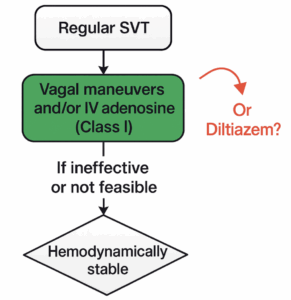
Article:
Association of Prehospital Blood Product Transfusion During Medical Evacuation of Combat Casualties in Afghanistan With Acute and 30-Day Survival
Background & Objectives:
Given that hemorrhage is the leading cause of death in patients suffering from severe traumatic injuries, the utility of prehospital blood product transfusion has been a highly debated topic. Despite the important role of early transfusion in the management of hemorrhagic shock, the majority of published data at this time has shown inconclusive findings with regards to survival benefit from prehospital blood product transfusion, particularly within civilian trauma systems. Many of these studies suffered from significant flaws, and therefore, the verdict is still out on the role of prehospital transfusion. The purpose of this study was to address these deficiencies in the medical literature by studying the effect of prehospital transfusion within the context of the US military experience on MEDEVAC aircraft in Afghanistan. More specifically, the authors of this manuscript wanted to study the following question: Is prehospital blood product transfusion among military combat casualties associated with improved survival at 24 hours and at 30 days?
Methods:
The investigators conducted a retrospective cohort study of US military combat casualties in Afghanistan between April 1, 2012 and August 7, 2015. Patients were recruited from the Department of Defense trauma registry, the prehospital trauma registry, and the Armed Forces Medical Examiner System Database. Inclusion in the study was predicated on the following criteria being met:
1. US military service member who survived until MEDEVAC rescue from point of injury AND
2. At least 1 of the following criteria for prehospital transfusion for severe trauma
· 1 or more traumatic limb amputations with at least 1 amputation located above the knee or elbow OR
· Hemorrhagic shock defined by systolic blood pressure <90 mmHg or heart rate >120 beats per minute
The interventions that were examined were 1) initiation of prehospital transfusion (red blood cells and/or plasma) and 2) minutes from MEDEVAC rescue to initiation of transfusion regardless of setting (i.e. in the field vs surgical hospital). As stated earlier, the key outcomes that were examined were survival at 24 hours and at 30 days. Interestingly, the investigators compared individuals who received prehospital transfusion to nonrecipients of prehospital transfusion. These individuals were frequency matched based on 5 characteristics including mechanism of injury, prehospital shock, type and severity of traumatic limb amputation hemorrhagic torso injury assessed by Abbreviated Injury Scale (AIS) and finally severity of head injury assessed by AIS score. Using Cox regression analysis, further stratification was performed and adjusted for age, injury year, transport team, tourniquet use and time to MEDEVAC rescue.
Key Results:
During the specified time frame of the study, there were 502 casualties who met inclusion criteria. 55 individuals received prehospital transfusion vs 447 individuals who did not receive transfusion. Of these individuals who did not receive transfusion, 345 were frequency matched to prehospital transfusion recipients based on the characteristics mentioned above. The key findings were as follows:
With respect to the entire study population:
· Within 24 hours of MEDEVAC rescue, 3/55 (5%) of prehospital transfusion recipients died compared to 85/447 (19%) of non-recipients (between group difference -14%; 95% CI -21% to -6%; p=0.01).
· Within 30 days of MEDEVAC rescue, 6 prehospital transfusion recipients died (11%) compared to 102 non-recipients (23%) (between group difference -12%; 95% CI -21% to -2%; p=0.04)
With respect to matched study cohorts:
· Within 24 hours of MEDEVAC rescue, 3 (5%) prehospital transfusion recipients died compared 69 (20%) matched non-recipients (between group difference -15%; 95% CI -22% to -7%; p=0.007)
· Within 30 days of MEDEVAC rescue, 6 (11%) prehospital transfusion recipients died compared to 78 (23%) matched non-recipients (Between group difference -12%; 95% CI -21% to -2%; p=0.05)
With respect to survival analysis:
· Among the 386 patients within the matched groups, adjusted hazard ratios were calculated. The investigators reported the adjusted hazard ratio for mortality to be 0.26 (95% CI 0.08 to 0.84; p=0.02) within the first 24 hours. Within the first 30 days, the adjusted hazard ratio for mortality was 0.39 (95% CI 0.16 to 0.92; p=0.03).
With respect to time to first transfusion:
· The study revealed that time to initial transfusion was associated with reduced mortality within 24 hours only up to the first 15 minutes after MEDEVAC rescue (adjusted hazard ratio 0.17 95% CI 0.04-0.73; p = 0.02)
Takeaways:
· For US military casualties in Afghanistan, prehospital blood transfusion was associated with a statistically significant improvement in survival at 24 hours and 30 days compared with a matched sample that received no prehospital transfusion.
· Early prehospital transfusion was associated with improved mortality but only within the first 15 minutes of MEDEVAC rescue.
What this means for EMS:
There is no question that civilian trauma care has been greatly influenced by lessons learned on the battlefield. While this study performed on MEDEVAC helicopters in Afghanistan supports the notion that improved mortality can be achieved with prehospital blood transfusion for hemorrhagic shock, the translation of these findings to EMS systems back home may be more challenging. For starters, the logistical implementation of prehospital blood transfusion would require massive utilization of precious resources. Refrigeration, coordination with blood banks and hospitals, and care as to avoid wasting of life saving blood products are few of the many obstacles to ubiquitous implementation of prehospital blood transfusion in the civilian EMS world. Furthermore, the advanced resuscitative capabilities of MEDEVAC aircraft may not always be readily available in civilian systems, which may have accounted for the improved mortality observed in the study. Overall, while the results from the study were extremely encouraging, more research needs to be done to evaluate the precise role of prehospital transfusion in civilian EMS settings.




